Rhea
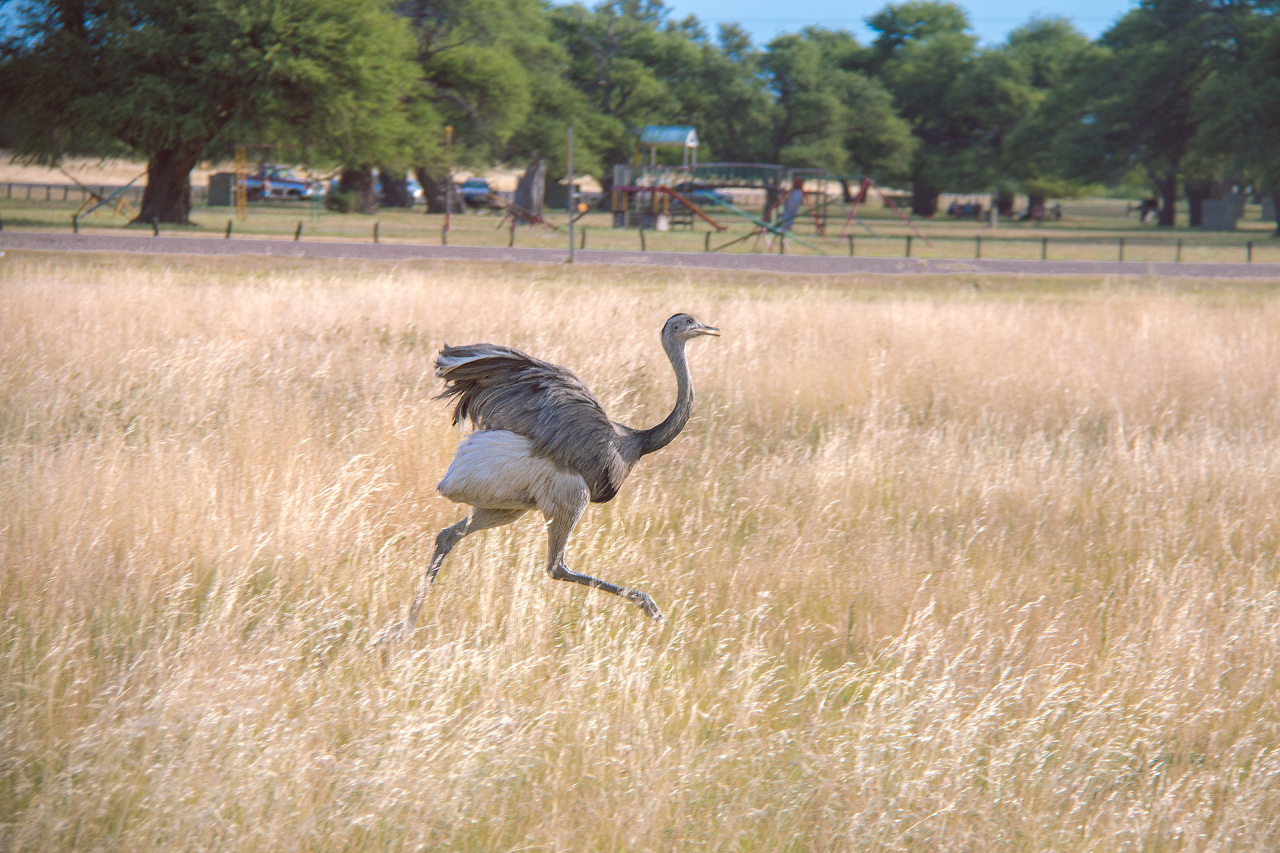
Greater Rhea by Juan Eduardo De Cristófaro, CC BY 2.0
Name: Rhea
Status: Extant
First Described: 1760
Described By: Brisson
Classification: Dinosauria, Theropoda, Neotheropoda, Averostra, Tetanurae, Orionides, Avetheropoda, Coelurosauria, Tyrannoraptora, Maniraptoriformes, Maniraptora, Pennaraptora, Paraves, Eumaniraptora, Averaptora, Avialae, Euavialae, Avebrevicauda, Pygostylia, Ornithothoraces, Euornithes, Ornithuromorpha, Ornithurae, Neornithes, Palaeognathae, Notopalaeognathae, Rheiformes, Rheidae
Referred Species: R. americana (Greater Rhea, extant); R. pennata (Darwin’s Rhea, Extant); R. fossilis (extinct), R. mesopotamica (extinct), R. pampeana (extinct), R. subpampeana (extinct)
The Rhea is the other fast moving ratite, and also the South American ratite, and also the often forgotten ratite. Still, Rheas are interesting in their own right, and deserve just as much love as other ratites. This specific genus first appeared about 126,000 years ago, in the Tarantian age of the Pleistocene, as the Ice Age was beginning to wind down. It has four extinct species - R. fossilis, R. mesopotamica, R. pampeana, and R. subpampeana. which are all known from the Pleistocene of Argentina. Today, they remain primarily in South America, though there is a notable feral population in Germany, living in the German countryside with a population of over 100 birds.
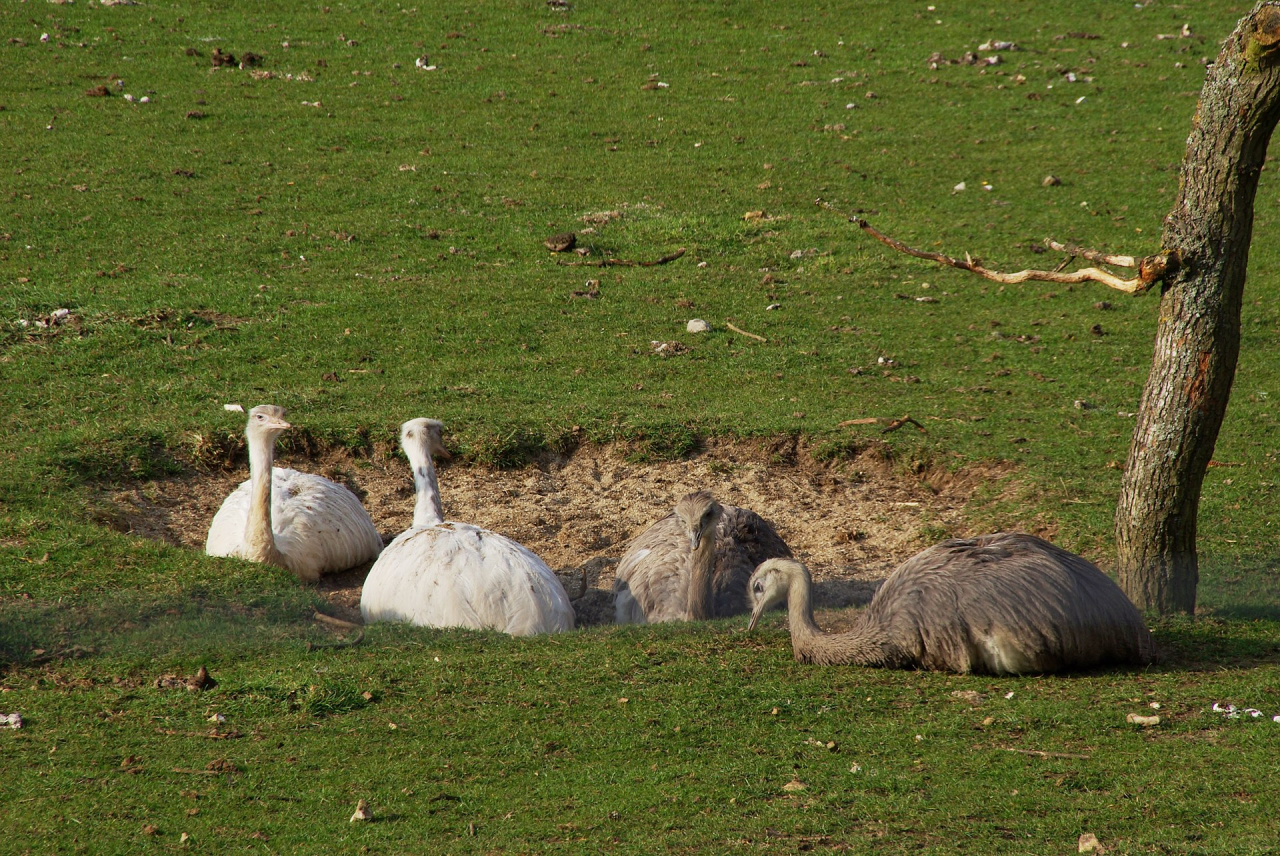
Greater Rhea by Dr. Chrissy, CC BY-SA 3.0
Both species of Rheas are large, flightless and brown, with long legs and long necks, allowing them to run fast in their open grassland habitats. They have large wings that aid in maneuvering and performing sharp turns as the run, much like in Ostriches. They spread them while running, making them act like sails. They don’t have the almost-hooves of ostriches, but rather run on three toes, and have lost their fourth toe completely. They are also kind of weird in that they store urine in an expansion of their cloaca, which is pretty wilde (the cloaca is the all-purpose waste removal and sexual reproduction hole of birds and some other reptiles). They are very quiet birds, though males do call for females during the mating season with loud booming noises. They then lift their body, ruffle their plumage, and keep their necks stiff while raising their wings and running around a little bit to impress a female. Unlike Ostriches, however, Rheas form flocks year-round, living in groups of 20 to 25 birds (though sometimes the groups are smaller). They will run in a zig-zag pattern as a group to evade predators.
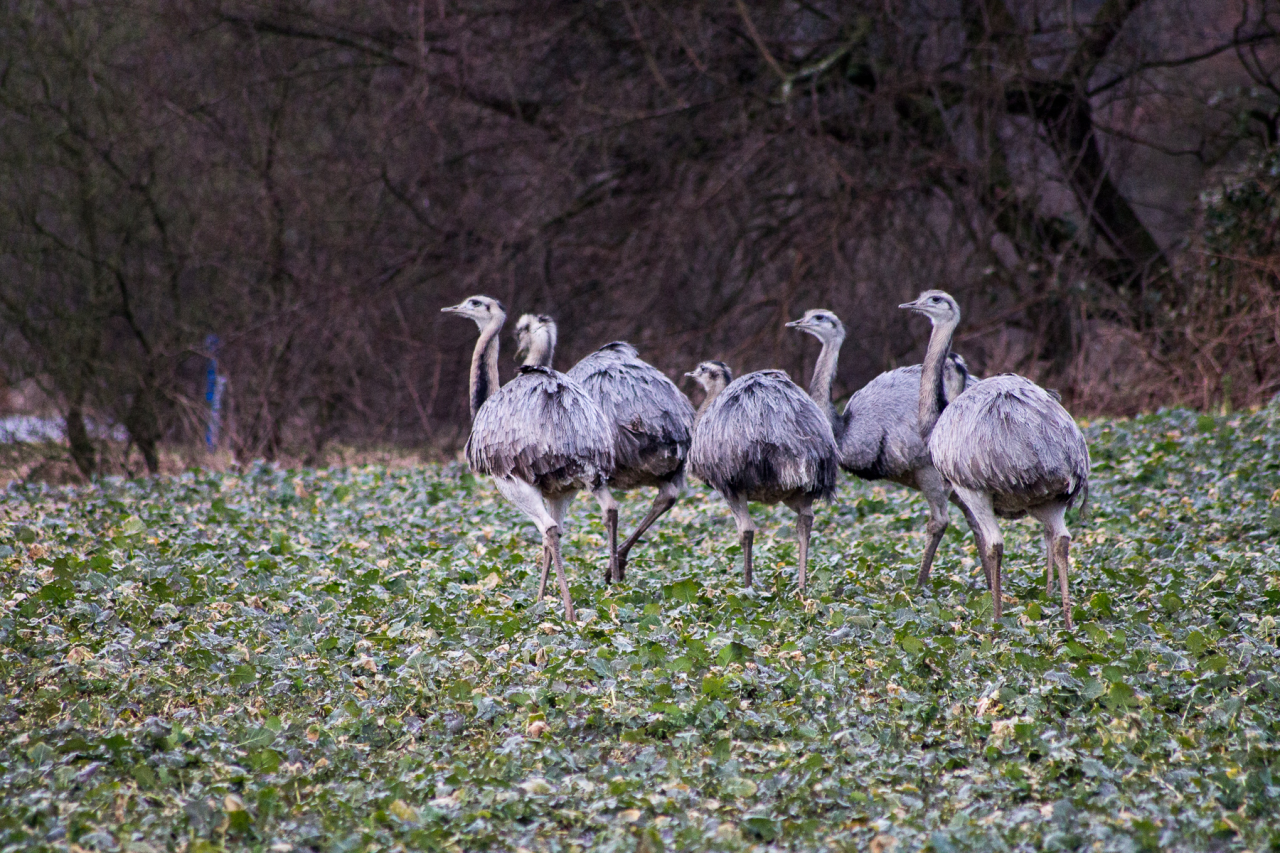
Greater Rhea by Florian Timm, CC BY-SA 2.0
They are herbivorous, with rounded flat beaks, feeding mainly on fruit, seeds, and roots, though they do supplement their diet with insects and small reptiles and rodents. Baby rheas only eat insects for the first few days of their life. The males will mate with two to twelve females per season, and build a nest, where the females will lay their eggs - much like how all the female ostriches that mate with a male ostrich will lay their eggs in a single nest. The male will sacrifice some eggs outside the nest to distract predators, and even will use another male to incubate the eggs while he mates with other rheas. The females then mate with other males as well. The males then take care of the chicks, to the exclusion of female rheas - even chasing them away. The rheas reach adult size in six months, and become sexually mature at two years.
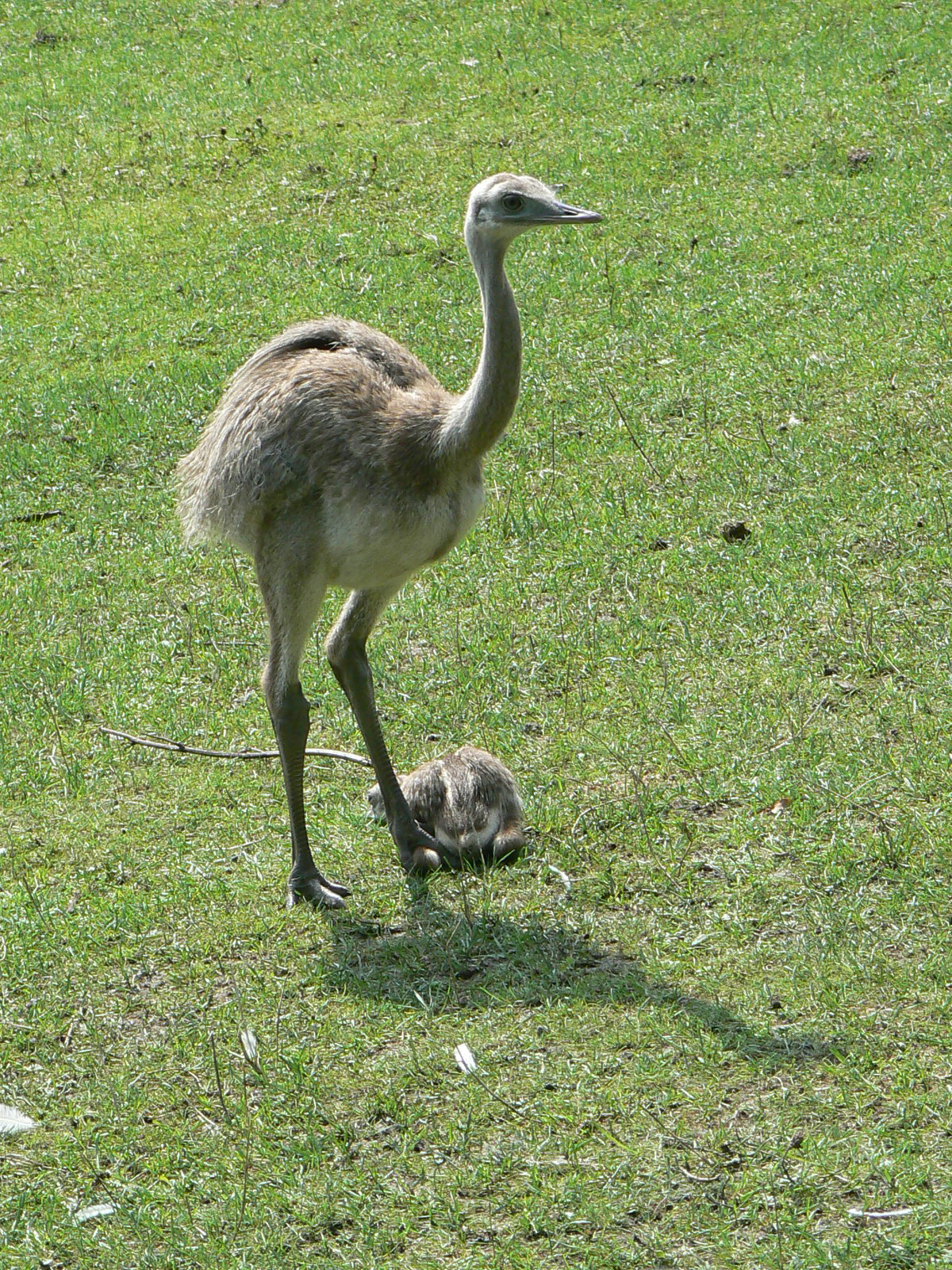
Greater Rhea Chick and Juvenile by Lady of Hats, in the Public Domain
The Greater Rhea, R. americana, is the larger of the two species, living in Argentina, Bolivia, Brazil, Paraguay, and Uruguay. It primarily lives in grasslands, savanna, and grassy wetlands, and it weighs between 20 and 27 kilograms on average (though it can weigh up to 40 kilograms), and is the largest bird (today) in South America. The males are usually bigger than the females. They eat lots of different types of plants, though there are plenty of plants that are farmed by humans that they don’t like - like cereals and eucalyptus. This actually turns into a beneficial situation for both the human and the rhea, because rheas will go into these fields and feed on invertebrates that are pests in these agricultural settings.

Greater Rhea by Rufus46, CC BY-SA 3.0
The Greater Rhea is primarily preyed upon by cougars and jaguars as adults. Dogs will also hunt the birds, and the Southern Caracara preys on hatchlings. Armadillos will eat on Greater Rhea eggs as well. Unfortunately, being in captivity makes them more vulnerable to predators - Greater Rheas raised in captivity are “ecologically naive”, meaning they’re fearless of predators and reintroducing birds raised in captivity to their environment hasn’t been a very successful endeavor. Conditioning can lead to some fear of predators, but their personality affects it extensively - shy birds are afraid enough of predators to get by, but bolder Greater Rheas are usually not allowed to be released into their environment.
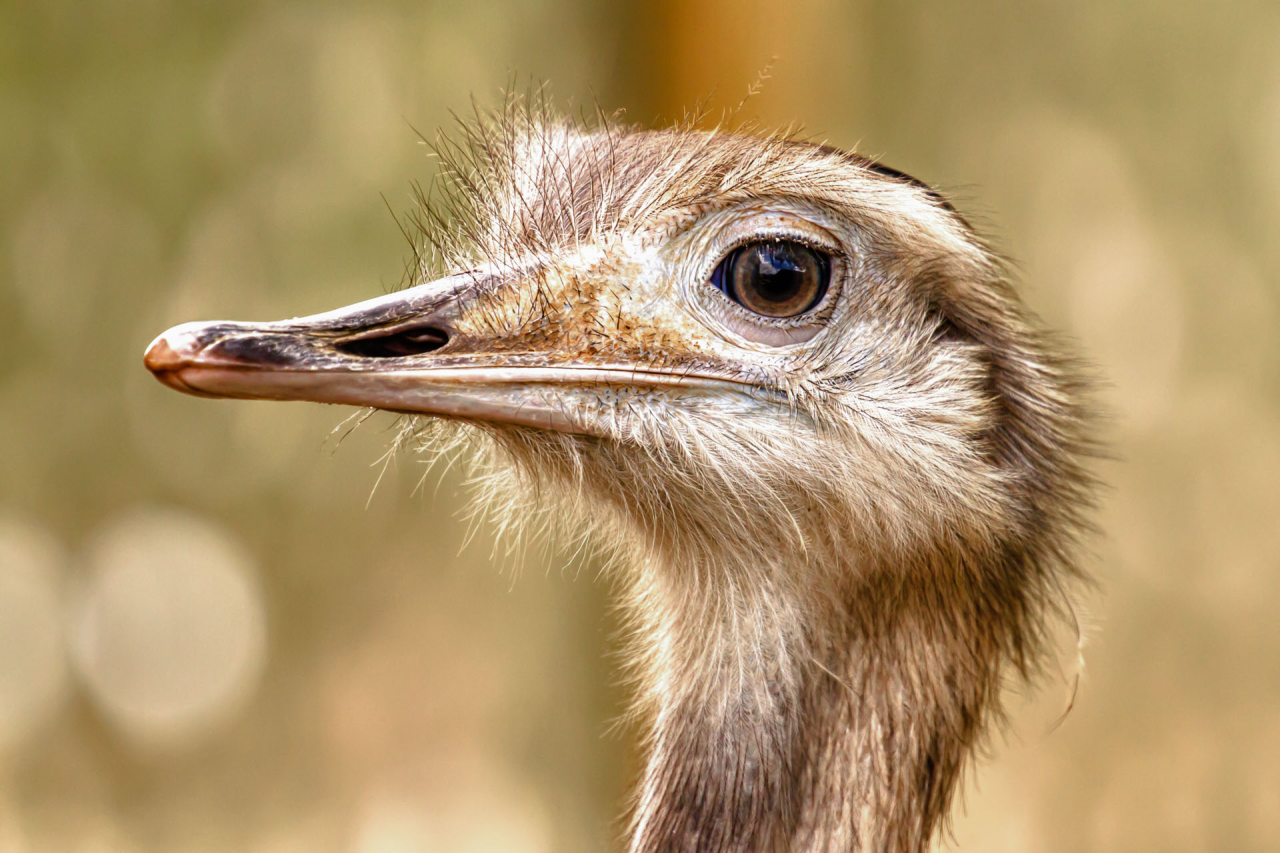
Greater Rhea by Michael Palmer, CC BY-SA 4.0
The Greater Rhea is near-threatened in terms of its conservation, and their range is decreasing due to increased hunting and increased agriculture in South America. Argentina and Uruguay are having especial decreases in population. Farmers will kill them where they are considered pests and burning of crops leads to increased decline. Still, they are flourishing in other areas such as Germany. They also are kept and farmed, like Emu and Ostrich, for their meat and egg as well as oil.
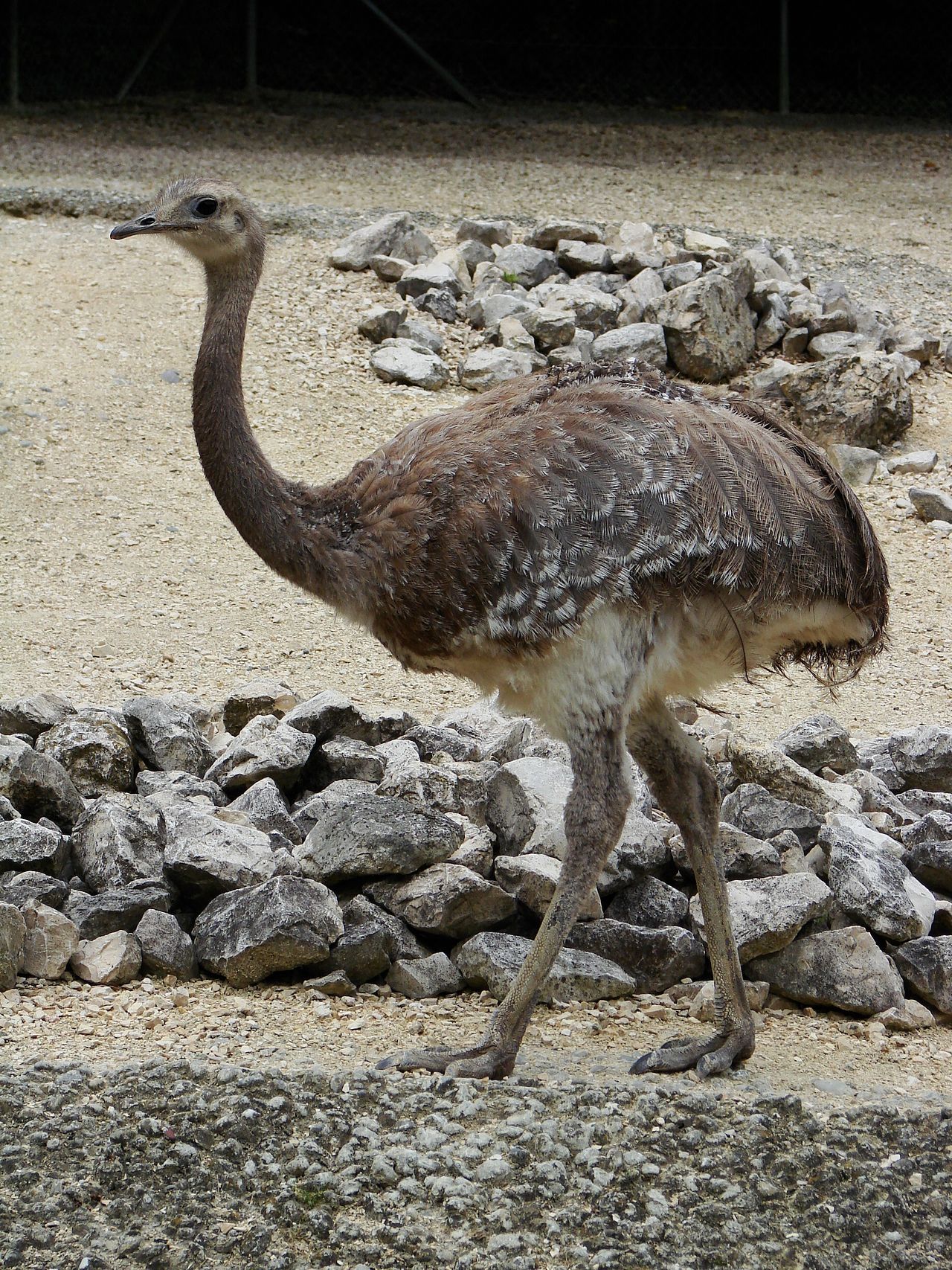
Darwin’s Rhea By Guérin Nicolas, CC BY-SA 3.0
Darwin’s Rhea is a smaller species, only reaching about 15 to 28 kilograms, and is found primarily in Chile and Argentina. Though living in a smaller area, it is less threatened than the Greater Rhea, classified as Least Concern. They have sharp claws on their toes that allows them to kick more effectively, defending themselves against predators. They have more spotted plumage than their larger cousins, and males are more aggressive in protecting their chicks. This species also includes R. p. tarapacensis, the Puna Rhea, which is often considered a different species, but here is treated as subspecies of Darwin’s Rhea. They eat saltbush and cactus fruit, as well as grass, and they’re also quite like the Greater Rhea. They live in smaller groups as well, between 5 and 30 birds. The chicks become fully mature at 3 years of age.
Sources:
https://en.wikipedia.org/wiki/Greater_rhea











